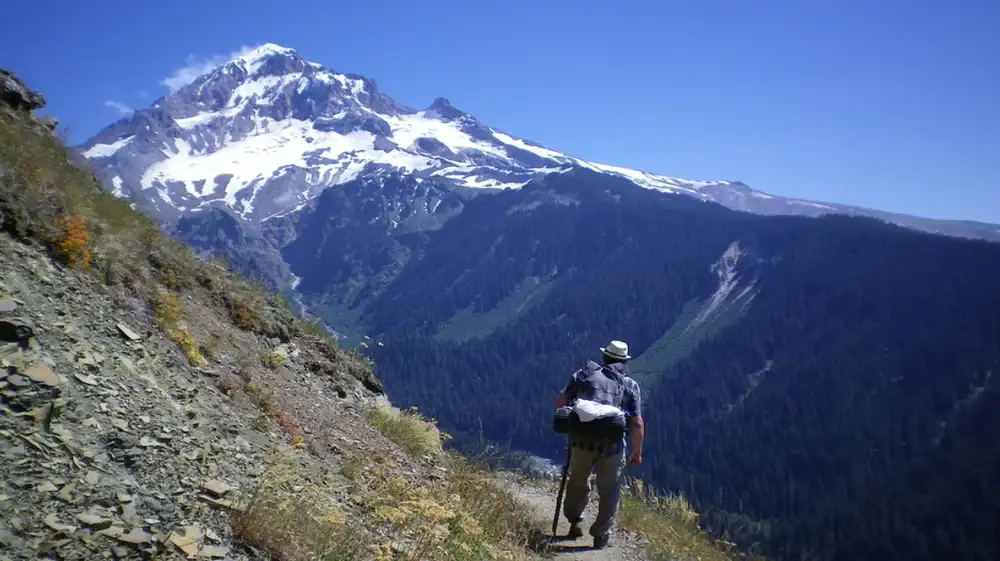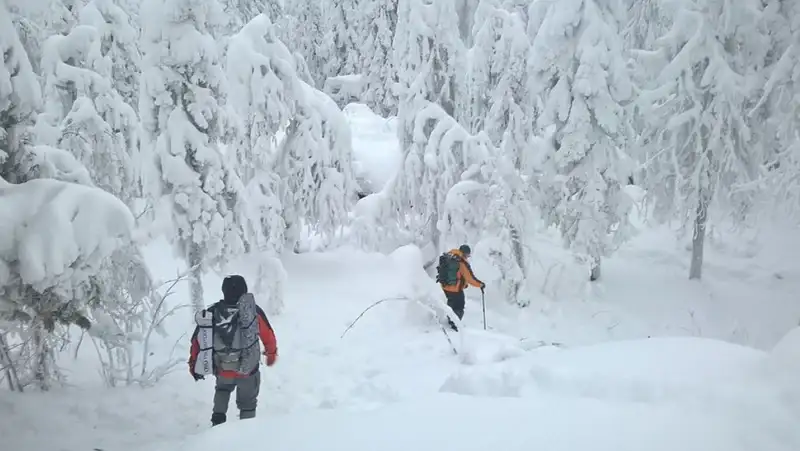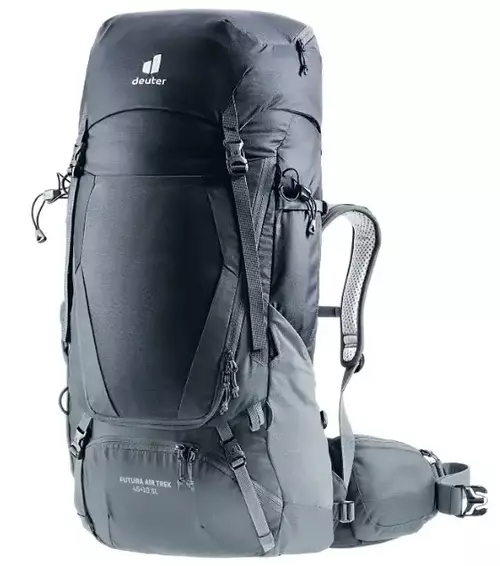An overnight hike implies that you sleep outdoors, so you will carry the usual three bulkiest items. In this sense, there is no much difference between an overnight and a multi-day hike.
In the case of an overnight hike you will likely carry a tent, a sleeping pad, and a sleeping bag. The size of your pack will therefore mainly depend on how bulky these three items are. This will be determined by the season and climate, and by how much you want to spend on your equipment.
If your pack has the usual attachment options so that you can carry at least some of the bulky items attached from outside, then you can think about a pack with the volume of 40-50 liters. This will be large enough for everything you need for an overnight hiking adventure.

Backpack features that add to its effective volume capacity
Bottom compression straps
If you sleep outdoors and have to carry a sleeping pad, there are several factors that determine how you will carry it.
So if this is a closed-cell foam pad, you will have to attach it from outside. Such pads are very light but also very bulky. In most cases you can carry it by using compression straps on the bottom-front area of a pack.
But if this is a warm weather hiking, you will likely use some of those compact air pads. Such a pad you can store anywhere inside a pack. Then you can use the bottom straps to attach your tent.
An insulated inflatable pad will be bulkier, and you can attach it on the bottom, or keep under the lid, see more below.
One example of packs with such bottom straps is the Osprey Eja 48 Pack for Women.
⇒ Related: What Are All Straps on a Backpack Used For?
Floating lid
Having a classic lid is better than a panel-loading zippered top access due to several reasons.
- Such a lid usually includes at least one zippered pocket, in most cases you will have them two.
- If the lid is a floating type, you can raise it and store some of the bulky items for sleeping underneath the lid. This can be any of the mentioned biggest three.
- But a floating lid can be useful also if the pack has a feature described in the following section, i.e., an expandable collar.
Such floating lids are available in many packs from top brands. So here are a few examples:
- The previously mentioned Osprey Eja 38 has this feature.
- You have it also in Gregory Focal 48 Pack for Men.
Expandable collar
This is a feature that is frequent with Deuter packs. It can be very useful for example in the beginning of a tour when you have more food and water.
This means that you can expand the collar and raise the floating lid to accommodate for this.
Trail conditions that affect the required size of an overnight pack
What I mean by this is the following. If you know for sure that you have places to collect water, then there is no need to carry it all the way with you.
This can drastically reduce the weight of your pack, and also its volume.
So instead of carrying water, simply bring a water filter or purifier with you. To play safe, have one full bottle with you and refill it on the tour whenever you have a chance.
In my separate texts about personal water filtration systems on the trail you can read more about all the questions related to this issue. My point is, never use water that is not filtered or purified, regardless of how clean it may look to you.
Season and climate conditions that affect the size of an overnight hike backpack
Some aspects of this I have already mentioned. But here to add also this.
Regarding climate, if you know for sure this is a dry area, you can leave your tent’s fly at home, and take the rest to have protection from insects.
On the other hand, such a dry area may be without water sources on the trail. So you will have to carry it with you.
From my experience, the biggest item is always a sleeping bag. Well, a cold-weather sleeping will be even bigger item in your pack. This will be so even if you decide to spend a lot and buy a sleeping bag from a top brand like Nemo or Therm-a-Rest.
The picture below shows how it can be on a winter overnight hiking. Here, you will have bulky stuff and your pack will be large.

But in summer you may manage with an ultra compact sleeping pad and a very compressible down sleeping bag. If you combine these with a solo backpacking tent, your pack can be surprisingly small.
Final thoughts
In summary, if you sleep outdoors, no matter if this is an overnight hike or a tour of several days, you will carry three main items for outdoor sleeping. They are usually bulky and heavy, therefore your hiking pack should be large enough to accommodate such items inside or to allow for attaching some of them on the pack from outside.
An ideal option with all the elements mentioned above is the Deuter Futura Air Trek pack shown in the picture. They have it in several sizes and in separate versions for men and for women. If you follow the link above you will see that they all have the number +10 in the name, which describes the fact that it has an expandable collar that adds 10 liters of extra volume when needed.

However, if these backpacks are too big, check the Deuter Aircontact Core series from the same brand, the smallest packs in this series start from 35+10 liters. They are available at Deuter, REI, and Amazon as well. You can read about one of them in my detailed review.
Let me know if you think I have missed mentioning something important, there is a comment box below. For more texts of this type please check in the category FAQs here in the site.
Subscribe to my weakly newsletter and stay informed, the subscription form is given below. Thank you for reading and have a nice day.
Leave a Reply